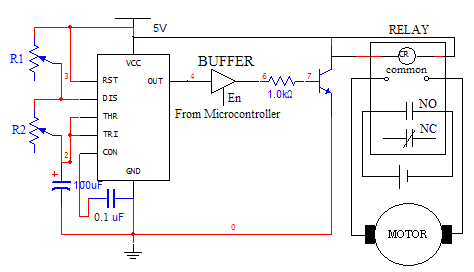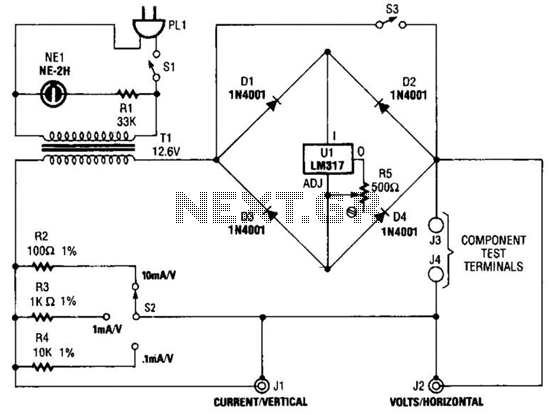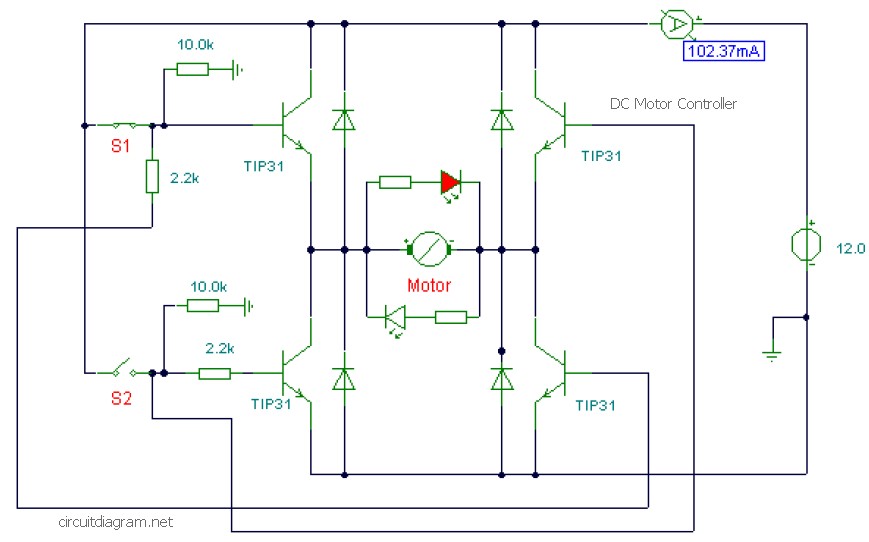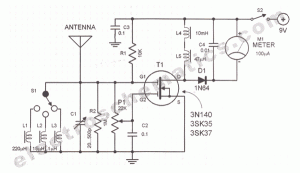
BA3822 five-point stereo graphic equalizer circuit design
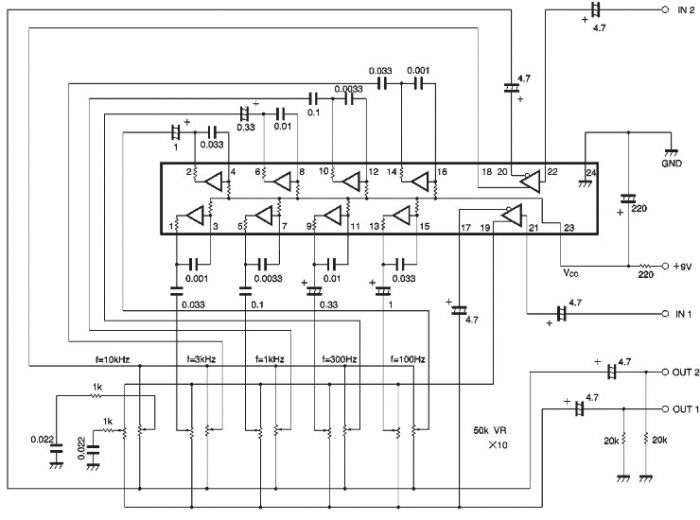
The BA3822 is a five-point stereo graphic equalizer integrated circuit that operates with two channels. Each channel can independently set five center frequencies using external capacitors. This integrated circuit supports a wide operating power supply voltage range (VCC = 3.5V to 14V) and is available in compact 24-pin SZIP and SSOP packages, depending on the variant.
The BA3822 integrated circuit is designed to enhance audio signals by allowing precise control over specific frequency bands, making it suitable for various audio applications, including consumer electronics and professional audio equipment. The two-channel configuration enables stereo sound manipulation, which is essential for achieving a balanced audio output in modern audio systems.
The five center frequencies typically correspond to key audio ranges, allowing users to adjust the equalization to enhance bass, midrange, and treble frequencies according to their preferences. The use of external capacitors for setting these frequencies provides flexibility in tuning the equalizer to meet specific requirements or to adapt to different audio environments.
The wide operating voltage range of 3.5V to 14V allows the BA3822 to be integrated into a variety of systems, from battery-powered devices to mains-powered equipment. The choice of compact 24-pin SZIP and SSOP packages facilitates easy integration into printed circuit boards (PCBs), minimizing space requirements while ensuring reliable performance.
To implement the BA3822 in a circuit, it is essential to consider the external components, such as the capacitors used for frequency setting, as well as the power supply design to ensure stable operation across the specified voltage range. Additionally, proper layout techniques should be employed in PCB design to minimize noise and interference, which can adversely affect audio quality. Overall, the BA3822 is a versatile component for achieving high-quality audio processing in a compact form factor.BA3822 five-point stereo graphic equalizer integrated circuit has two channels, and the five center frequencies for each channel are independently set using external capacitors. These IC feature a wide operating power supply voltage range (VCC = 3. 5V to 14V), and are available in compact 24-pin SZIP and SSOP packages, depending on the type. 🔗 External reference
The BA3822 integrated circuit is designed to enhance audio signals by allowing precise control over specific frequency bands, making it suitable for various audio applications, including consumer electronics and professional audio equipment. The two-channel configuration enables stereo sound manipulation, which is essential for achieving a balanced audio output in modern audio systems.
The five center frequencies typically correspond to key audio ranges, allowing users to adjust the equalization to enhance bass, midrange, and treble frequencies according to their preferences. The use of external capacitors for setting these frequencies provides flexibility in tuning the equalizer to meet specific requirements or to adapt to different audio environments.
The wide operating voltage range of 3.5V to 14V allows the BA3822 to be integrated into a variety of systems, from battery-powered devices to mains-powered equipment. The choice of compact 24-pin SZIP and SSOP packages facilitates easy integration into printed circuit boards (PCBs), minimizing space requirements while ensuring reliable performance.
To implement the BA3822 in a circuit, it is essential to consider the external components, such as the capacitors used for frequency setting, as well as the power supply design to ensure stable operation across the specified voltage range. Additionally, proper layout techniques should be employed in PCB design to minimize noise and interference, which can adversely affect audio quality. Overall, the BA3822 is a versatile component for achieving high-quality audio processing in a compact form factor.BA3822 five-point stereo graphic equalizer integrated circuit has two channels, and the five center frequencies for each channel are independently set using external capacitors. These IC feature a wide operating power supply voltage range (VCC = 3. 5V to 14V), and are available in compact 24-pin SZIP and SSOP packages, depending on the type. 🔗 External reference
